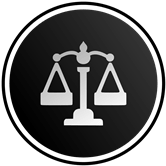Updated on November 01, 2025 05:33:18 PM
Trademark registration is a crucial part of the protection of the brand identity of your business, however during the process there are some common challenges such as opposition or objection you will face. If you have reached this stage now understanding the process of trademark hearing in Ladakh is an essential part. A trademark hearing involves face-to-face dialogue with the Registrar of Trademarks to solve issues found in the report examination. During this hearing, you must demonstrate your trademark's legitimacy through powerful evidence-based arguments.
Although handling a trademark hearing in Ladakh can be challenging for those who are facing it for the first time it is possible to handle it with help. To improve your chances of approval, our professional at Legalis Legalis is proficient at speeding up the brand registration process. In this article you will learn the steps and process of trademark hearings in Ladakh, as well as practical methods for handling objections and finishing the registration process, are covered in this article.
During hearings in Ladakh majority of cases involve "show cause hearings," where the Registrar demands justifications for your application being approved rather than rejected. A trademark application requires proof of uniqueness along with full compliance to trademark legal standards. Protecting your trademark application needs both thorough preparation work and reliable evidence to reach a successful result.
At hearings in Ladakh, most parties experience "show cause hearings" with the Registrar directing them to present arguments why their trademark applications must be approved instead of refused. Your application for a trademark needs to show distinctiveness and legal compliance with all trademark regulations to be approved. A well-prepared submission and proof-backed comprehensive evidence stand as critical requirements to both defend your application and obtain a successful result.
Trademark registration gives you plenty of important benefits that will help you to protect and expand your business. In case any objection arises during the registration process,then the trademark registrar will hold a hearing to review such objections.At this time you or your legal representative has to provide proper evidence and argument to support the case.Here are some important benefits of doing trademark registration.
All trademark hearings in Ladakh since 2020 have taken place virtually in India; it makes things more accessible and convenient. However, regarding the filing of trademark applications, the states and union territories have been grouped into five regional jurisdictions. This is how it has been arranged -
A trademark hearing in Ladakh is an essential part of the registration process and is usually scheduled when there are objections to your application.Failing to Sufficiently deal with these objections may result in the rejection of your trademark application.These objections can arise due to the following reasons:
The process of trademark hearing in Ladakh can be quite overwhelming. This is a simplified version of the procedure, which will help you understand each step clearly and prepare accordingly:
After filing your trademark application, the Registrar of Trademarks reviews it. If any issues arise—such as lack of distinctiveness, similarity to an existing mark, or improper classification—the Trademark Examiner issues an Examination Report detailing these objections.
You need to respond to the Examination Report within 30 days from the date of its issuance. Your response should address all objections, properly justified with supporting documents.
If your response is insufficient, the Registrar issues a Hearing Notice. This notice specifies the objections raised and provides the date and time for your hearing.
Preparation is key to a successful trademark hearing. Here’s what you should do:
On the scheduled date, either you or your attorney must appear before the Registrar (or hearing officer).The Registrar will hear both sides, including any remarks from the Trademark Examiner, before making a decision. The process typically involves:
After the hearing, the Registrar may:
In some cases, the decision is announced immediately, while in others, it may take a few days.
An ideal trademark should represent the essence of the product or service, and should be recognizable and memorable. Following are the most important characteristics to look for in making a strong trademark that will hold up to strength under the law:
To effectively plead your case, you will need the following documents:
If your trademark status reads "ready for show cause hearing," it means the Registrar has scheduled a hearing for your application. This status indicates that your application has objections requiring clarification or evidence. Think of it as a checkpoint where your trademark’s fate will be determined based on how well you present your case.
To effectively plead your case, you will need the following documents:
Trademark hearings in Ladakh function as a vital mechanism to obtain trademark security along with its formal legal protection. You will increase your probability of successful outcomes when you address objections through arguments supported by solid evidence along with timely responses. If you obtain proper guidance and learn all required procedures you will manage this vital phase with certainty.
The rise in trademark hearing cases throughout Ladakh demands professional advisory services for an effective way forward. Our mission at Litem Legalis is to streamline the trademark hearing process in Ladakh while delivering a quick resolution of all objections. Reach us now for professional help through each phase of your trademark registration process including objection management and flawless approval.

Legal Consultation

Expert Lawyers

Lowest Fees

Quick Process
A trademark hearing is a formal proceeding where the Registrar examines objections to a trademark application and allows you to present evidence to address concerns.
Trademarks face objections due to reasons like lack of distinctiveness, similarity to existing marks, descriptiveness, or classification errors.
Preparation involves reviewing the examination report, organizing evidence like invoices and marketing materials, and presenting a clear argument.
Post-hearing outcomes may include application approval, requests for further clarifications, or rejection based on the Registrar's decision
Disclaimer: The content provided on this site is intended for informational purposes only. Accessing or utilizing this site and its materials does not establish an attorney-client relationship. The information contained herein does not constitute legal or professional advice and should not be relied upon as such. It is not a substitute for obtaining legal counsel from a qualified attorney licensed in your jurisdiction.